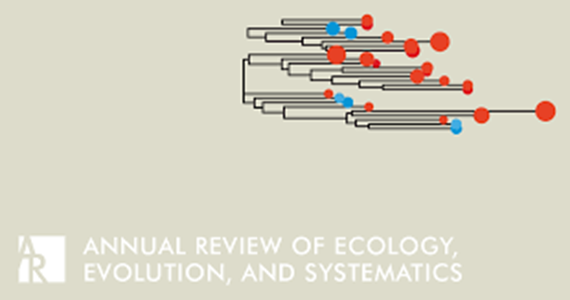植物的体细胞突变和进化
IF 11.2
1区 生物学
Q1 ECOLOGY
Annual Review of Ecology, Evolution, and Systematics
Pub Date : 2019-11-04
DOI:10.1146/annurev-ecolsys-110218-024955
引用次数: 58
摘要
体细胞突变在植物中很常见,它们可以积累并传递给配子。体细胞突变积累的决定因素包括突变的生物内选择效应、使合子与配子形成分离的细胞分裂次数、茎尖分生组织结构和分支。体细胞突变可以促进二倍体、多倍体、性重组、异交、克隆和性别分离的进化,并可能导致许多其他性状的遗传变异。通过生物内选择扩增有益突变可以放松选择以降低基因组突变率或保护植物的种系。体细胞突变的总速率、植物体中选择效应和命运的分布以及种系对体细胞突变的保护程度仍然知之甚少。我们可以通过对突变率和对细胞系和整个生物体的影响的经验估计来改进我们的知识,例如对同一植物上花内杂交和花间杂交产生的后代适应度降低的估计,冠层内的突变合并研究,以及将体细胞突变纳入植物进化遗传学的理论模型。本文章由计算机程序翻译,如有差异,请以英文原文为准。
Somatic Mutation and Evolution in Plants
Somatic mutations are common in plants, and they may accumulate and be passed on to gametes. The determinants of somatic mutation accumulation include the intraorganismal selective effect of mutations, the number of cell divisions that separate the zygote from the formation of gametes, and shoot apical meristem structure and branching. Somatic mutations can promote the evolution of diploidy, polyploidy, sexual recombination, outcrossing, clonality, and separate sexes, and they may contribute genetic variability in many other traits. The amplification of beneficial mutations via intraorganismal selection may relax selection to reduce the genomic mutation rate or to protect the germline in plants. The total rate of somatic mutation, the distribution of selective effects and fates in the plant body, and the degree to which the germline is sheltered from somatic mutations are still poorly understood. Our knowledge can be improved through empirical estimates of mutation rates and effects on cell lineages and whole organisms, such as estimates of the reduction in fitness of progeny produced by within- versus between-flower crosses on the same plant, mutation coalescent studies within the canopy, and incorporation of somatic mutation into theoretical models of plant evolutionary genetics.
求助全文
通过发布文献求助,成功后即可免费获取论文全文。
去求助
来源期刊
CiteScore
19.90
自引率
1.70%
发文量
21
期刊介绍:
The Annual Review of Ecology, Evolution, and Systematics is a scholarly publication that has been in circulation since 1970. It focuses on important advancements in the areas of ecology, evolutionary biology, and systematics, with relevance to all forms of life on Earth. The journal features essay reviews that encompass various topics such as phylogeny, speciation, molecular evolution, behavior, evolutionary physiology, population dynamics, ecosystem processes, and applications in invasion biology, conservation, and environmental management. Recently, the current volume of the journal transitioned from a subscription-based model to open access through the Annual Reviews' Subscribe to Open program. Consequently, all articles published in the current volume are now available under a CC BY license.

 求助内容:
求助内容: 应助结果提醒方式:
应助结果提醒方式:


